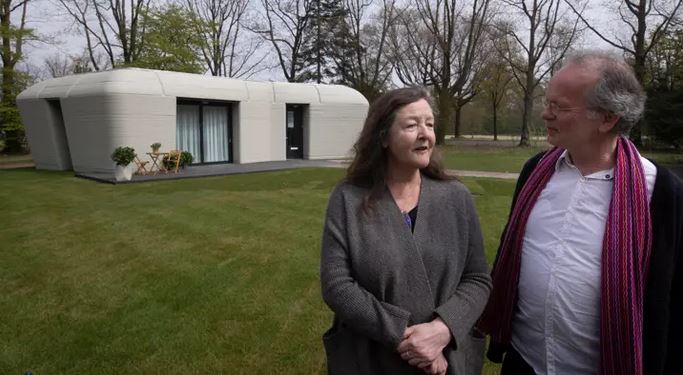A Dutch couple has moved into the first fully 3D-printed house in Europe.
70-year-old Elize Lutz and 67-year-old Harrie Dekker are renting the 94-square meter, two bedroom bungalow in Eindhoven for $960 a month.
The house looks like a big boulder with windows. It was printed at a local factory.
The 3D-printed houses can be built in just five days.
Researchers hope that the 3D-printed buildings can be used to help with Netherlands’ housing shortage.
The country needs to build thousands of new homes in the next ten years in an attempt to house their growing population.
Theo Salet, a professor at Eindhoven’s Technical University, says that using 3D printing for houses in the future will save on materials and make construction more sustainable.
“The answer is sustainability. And the first way to do that is by cutting down the amount of concrete that we use,” Salet said.
Printing more houses also means that we could reduce waste.
The home in Eindhoven is made of layers of concrete. It has 24 elements printed by a machine that spits out layer upon layer, giving it its ribbed texture. Then, finishing touches, like the roof, are added.
According to Salet, the concrete used has a toothpaste-like consistency, making it strong enough to build with but wet enough to stick together. Then, the printed elements are filled with insulation.
Bas Huysmans, chief executive of construction firm Weber Benelux, said: “This is also the first one which is 100 percent permitted by the local authorities and which is habited by people who actually pay for living in this house.”
“If you look at what time we actually needed to print this house it was only 120 hours. So all the elements, if we would have printed them in one go, it would have taken us less than five days because the big benefit is that the printer does not need to eat, does not need to sleep, it doesn’t need to rest,” he continued.
“So if we would start tomorrow, and learned how to do it, we can print the next house five days from now.”

